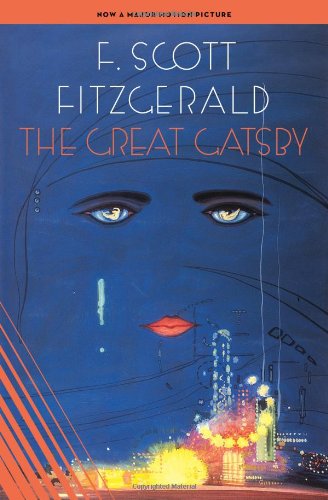All Nonfiction
- Bullying
- Books
- Academic
- Author Interviews
- Celebrity interviews
- College Articles
- College Essays
- Educator of the Year
- Heroes
- Interviews
- Memoir
- Personal Experience
- Sports
- Travel & Culture
All Opinions
- Bullying
- Current Events / Politics
- Discrimination
- Drugs / Alcohol / Smoking
- Entertainment / Celebrities
- Environment
- Love / Relationships
- Movies / Music / TV
- Pop Culture / Trends
- School / College
- Social Issues / Civics
- Spirituality / Religion
- Sports / Hobbies
All Hot Topics
- Bullying
- Community Service
- Environment
- Health
- Letters to the Editor
- Pride & Prejudice
- What Matters
- Back
Summer Guide
- Program Links
- Program Reviews
- Back
College Guide
- College Links
- College Reviews
- College Essays
- College Articles
- Back
The Great Gatsby by F. Scott Fitzgerald
One of the most beloved and notable novels of the 1920s is F. Scott Fitzgerald’s The Great Gatsby. Hailed as one America’s Great Novels, The Great Gatsby is a look at the lifestyle everyone secretly wishes to live but cannot afford. F. Scott Fitzgerald opens this exclusive vain world for everyone one of us who has yet to pleasure the lavishness of such lifestyle. Likewise, Fitzgerald does this to both glamorize vanity and yet shun it simultaneously.
Nicholas “Nick” Carraway, a World War I veteran and recent Yale graduate, narrates the story of The Great Gatsby upon moving into the neighborhood of (fictional) village of West Egg situated in Long Island. While visiting his beautiful cousin Daisy Buchanan nee Fay, who lives not too afar from Nick, Carraway begins to delve into the world of the helplessly and hopelessly wealthy. There he meets Jordan Baker, a lovely and famous golf-player, and Daisy’s husband Tom Buchanan. Tom is anything but a pleasant man: he is proud, a white supremacist that wants to influence Nick with his discriminatory thoughts, and an adulterous husband to Daisy, as Jordan reveals to Nick. As Daisy and Tom argue in a separate room from the room in which the four were previously in, due to Tom’s receiving a phone call, Jordan tells Nick that, although Daisy knows of Tom’s “having another girl in New York,” Daisy will not divorce Tom, due to her Catholic beliefs.
Upon Nick’s arrival home in West Egg, Nick’s next-door neighbor invites him to a party, which turns out to be a party unlike any other Nick has ever attended. Unproven gossips follow from the invited mouths to mouths about the mysterious wealthy host. No one knows a single iota of the truth behind the unknown playboy. Eventually, Nick meets the host of the party, Jay Gatsby; the two quickly develop a friendship, which Nick believes is based upon mutual interest. However, Gatsby, as Nick soon discovers is solely interested in re-winning the heart of his former lover Daisy. Daisy and Gatsby soon meet and the two become inseparable. At this point, everything in the novel begins surging upwards that can only lead to a steep fall downwards. Similarly, the truth behind Gatsby begins to reveal itself like the unfolding of a rose slowly shedding its tender petals to reveal the inside of the rose until it becomes nothing.
F. Scott Fitzgerald is one of the best novelists to have existed; this novel proves likewise. His prose contains lyrical elements. He conveys large and small scenes with the same precise and minute detail. As I read, I felt as though I was present with everything Fitzgerald elucidates: the crowded soirees enduring all night and the massive mansions extending at all sides limitlessly. I could see Gatsby’s shirts of all of diverse hues—turquoise, fuchsia, citrine, jade, etc.—as he threw them all out of his spacious closet—which I imagined to be larger than my bedroom—for Daisy to see. Fitzgerald made me feel as though I was there sitting side-by-side with Gatsby silently watching the emerald light beaming from Daisy’s house every night. Moreover, I felt Dr. T. J Eckleburg’s amber-spectacled large blue eyes watching the every move of West Egg’s residents.
With The Great Gatsby, Fitzgerald forms a love story filled with tension, emotion, and suspense. Fitzgerald elicits the reader’s curiosity for a lifestyle not everyone lives in life, and yet at the same time, he dexterously educes sympathy for these helplessly hopeless people, who seem to have it all yet yearn for something that seems irretrievable despite having much wealth. Through Nick’s perspective, the reader will indirectly witness the rise and demise of the great Gatsby.
May 10, 2013 is the release date of the new—and highly anticipated—film adaption of The Great Gatsby directed by Academy-Award nominated Baz Luhrmann (Moulin Rouge!, Best Picture 2001), director of films such as Strictly Ballroom and Romeo + Juliet. The film will include the following star-studded cast: two-time Academy-Award nominated actor Leonardo DiCaprio (The Aviator, Best Actor 2004; Blood Diamond, Best Actor 2006) as Jay Gatsby; Tobey Maguire (Sam Raimi’s Spiderman trilogy) as Nick Carraway; and Academy-Award nominated actress Carey Mulligan (An Education, Best Actress 2009) as Daisy Buchanan nee Fay. Joel Edgerton (Animal Kingdom) as Tom Buchanan, Isla Fisher (I Heart Huckabees and Wedding Crashers) as Myrtle Wilson, and Elizabeth Dibecki (A Few Best Men) as Jordan Baker—these three will also be part of the film.
Similar Articles
JOIN THE DISCUSSION
This article has 5 comments.
